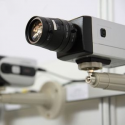Most non-security personnel, seeing some cameras around their facility, assume that camera coverage is pretty near 100%.
Managers who have asked for video clips covering locations of incidents (such as theft of employee lunches or missing office supplies) have often learned that in fact video coverage is significantly less than 100% in their facility.
However, there is a very fruitful exercise whereby the value of existing security cameras can be assessed, including their value to the area managers and supervisors—the people responsible for care of many corporate assets. This exercise will also reveal camera location and field of view improvements that will make the camera video more valuable.
We call it the Security Stakeholder Camera Assessment. It’s a very simple exercise.
Assessment Process
For each area that has video coverage:
- Identify the “area owner” or person responsible for the activity, operations and/or assets in the area (i.e. the security stakeholder).
- Bring a laptop that can view security video, or invite the stakeholder to the security monitoring room.
- Review the fields of view for each camera in the stakeholders area, and in the hallways and entryways leading into and out of the area.
- Inform the stakeholder how many cameras are in and the subject area and related hallways and entryways.
- Make the simple statement,”These camera’s locations and fields of view are of value to security, but we’d like to review the camera images with you.”
- For each camera:
- Ask “Could this camera’s view be improved in a way that would benefit you or your people more than it does now?”
- If the answer is yes:
- Make a note of the desired change, regardless of whether it’s currently possible to do.
- Assess the feasibility of the change (can the camera actually be installed or adjusted as requested?)
- Determine the impact, if any, on the camera’s security value.
- Discuss and note down the benefits of the change, and ask if there is any urgency in making the change.
- Make notes of other relevant comments made by the stakeholder, such as the desire for higher camera quality.
- As the final review step, have the Facilities Manager review the cameras as in Step 6, including any requests for improvements, and comments, that the security stakeholders have made.
- Analyze the results and create an appropriate Video Coverage Improvement Plan, and get it approved as appropriate.
- Carry out the Video Coverage Improvement Plan, being sure to have the security stakeholders verify the improvements that were made.
- Report the success to management.
Responses and Benefits
You may get all kinds of responses, including some like these:
- I wish I had know that we didn’t have the coverage thought.
- I think if we move the camera over just a little bit to cover the supply room door, I’d be happy not to have to put a lock on it.
- There is nothing wrong with the camera’s current view, but I sure wish the video was not so grainy.
- Is there a way to mask out the two desktops that are covered next to the door? I feel like that’s invading the employees’ privacy.
- Can you cover the desk in the corner? I swear he’s on the phone and not working most of the day!
- I can’t believe that we don’t have more complete camera coverage!
- What is the process for me to request getting a copy of video when something happens?
Most manager appreciate being informed about the camera coverage, and idea that their desires matter.
It is a good “public relations” move by Security, and often generates very positive buzz up the management chain.
Important note: it is crucial that if any requested camera changes cannot be made, that the reasons be explained courteously to the stakeholder, and without disparaging management. If it is a budgetary reason, sometimes the stakeholder will go to bat to get the needed funds approved, or provide them directly. A lack of follow up can make it seem like Security was just going through the motions, and didn’t really intend to take their wishes to hear.
Additionally, it is a good opportunity to learn more about the activities in each area and some of their risk factors—something Security should always be attentive to.
Reporting to Management
Whatever the results of the assessment are, be sure to report them to management. At the very least, if no changes are requested, it shows that Security did a good job in designing the camera coverage.
Hopefully there will be (or you can make) an opportunity to say, “We’ve made all the free improvements (say free or approved – as appropriate) that we can make to the existing cameras. Now we are ready to update our facility risk assessment in case we need other improvements that should be put in next year’s budget.”


